Chaturanga Dandasana — Don’t be afraid!

I know, I know. Most of us hear these two words — Chaturanga Dandasana — and groan. If you do vinyasa (flow) yoga, this pose (aka “Four-Limbed Staff Pose”) is a familiar, if dreaded, mainstay of the practice. We often treat it as a “pass-through” pose that links Plank with Urdhva Mukha Svanasana (Upward-Facing Dog Pose), but it has merits and benefits as a pose in its own right. And I’d like to give you some tips for how to practice this pose to build strength, structural integrity, and confidence!
What can go wrong?
Several things can happen to make Chaturanga Dandasana more difficult than it needs to be. Let’s look at them.
- Descending from Plank and ending up too close to the floor — harder on the shoulders and more difficult to rise back up for Upward-Facing Dog. Or back to Plank.
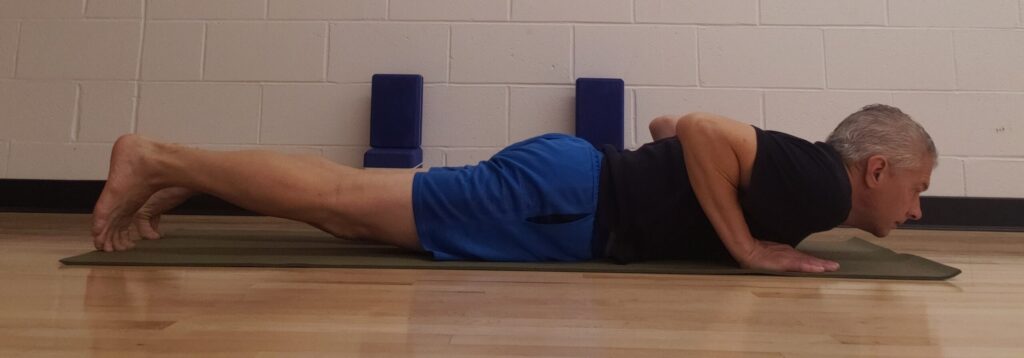
- Hips pike up and chest drops toward the floor. Note the elbows bending back from the vertical alignment.

- Bending the elbows out to the sides — again, stressful to the shoulders, as well as the wrists and elbows.

- Letting the hips dip out of alignment with the rest of the body — higher risk of compression in the lower back, plus shoulder stress and you never really make it into Chaturanga.
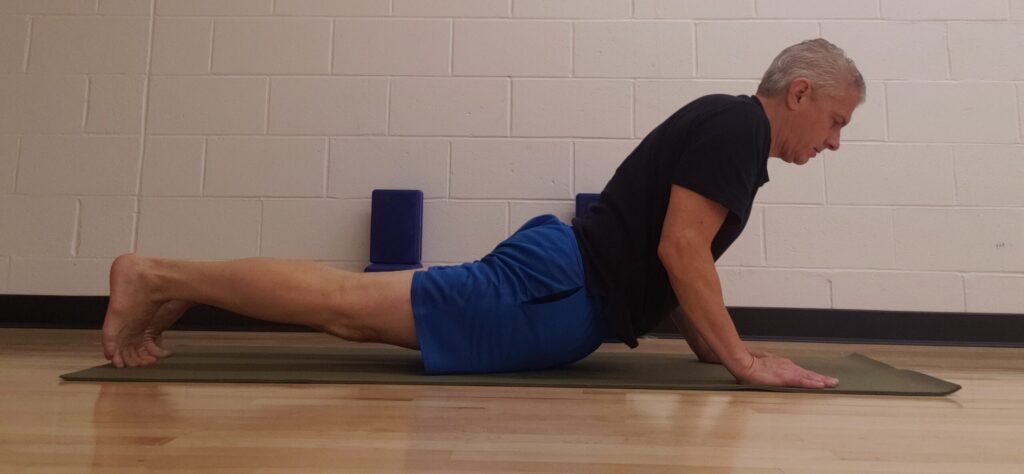
The biggest reasons to practice Chaturanga Dandasana safely and integrate it into your practice with more integrity are to reduce the joint stress, save your lower back, and conserve energy so this pose doesn’t drain you. Let’s face it, if you use too much energy just trying to get out of Chaturanga, you’ll become fatigued before you even reach the end of the class and end up in a heap on the floor.
Things to keep in mind
Here are some crucial points to keep in mind as you approach this pose. And in a moment, I’ll break down Chaturanga Dandasana into bite-sized pieces that will make practicing it more fun!
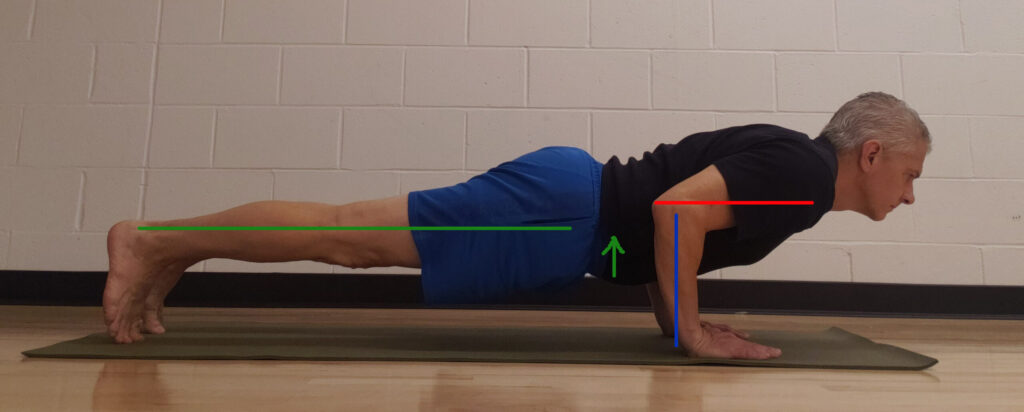
- Keep your forearms perpendicular to the floor and your elbows tucked into the sides of your torso. Your elbows are stationary hinges. If you move the elbows out of this position, everything becomes more difficult.
- Come down no lower than elbow height.
- Keep your legs and core activated to maintain alignment from heel to crown.
Block party
I’ve discovered what I consider to be the best way to practice Chaturanga Dandasana to support your alignment and to more easily manage the amount of energy you expend. Grab a couple of blocks, and let’s play!
First Block
- Come to hands and knees, positioning your knees directly under your hips and the heels of your hands directly under your shoulders. Your thighs and your arms should be perpendicular to the floor.
- Position a block on its long side directly in front of your knees with the broad side facing forward.
- Step your feet back into Plank. Keep your legs active and pull your navel up toward your spine so the abdominal muscles support the lower back.
- Maintain your plank alignment throughout your body as you initiate moving forward from your toes and immediately bend your elbows in place. Tuck your elbows into your ribs. As you move forward and the elbows bend, your thighs will encounter the block, effectively stopping your lower body from making contact with the floor.
- Press into your hands and press back through your heels as you lift from your navel to return to Plank.
- Repeat several times. Feel free to lift your feet off the floor since the block will hold the position of the legs steady.
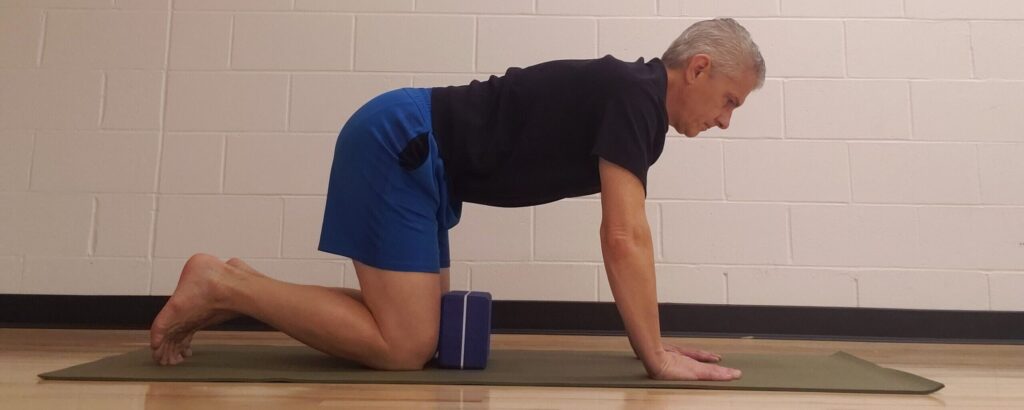
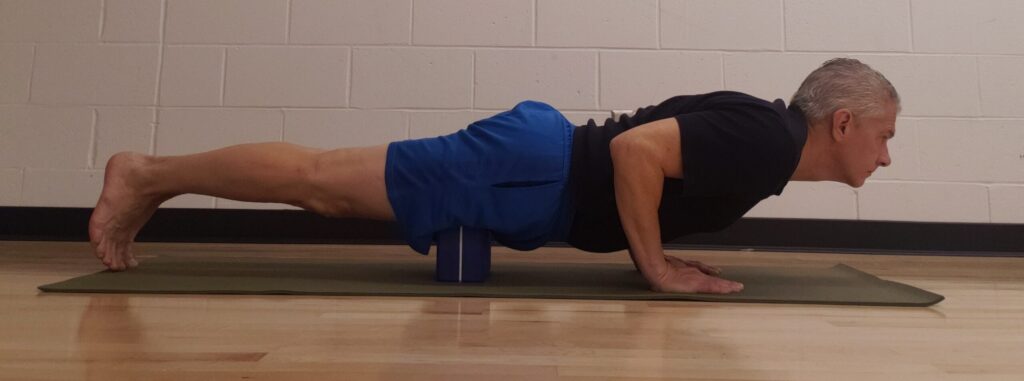

First Block, Second Position
- Once again, come to the same hands and knees position.
- Rotate your block 90 degrees, and bring the front end forward, centering it just behind the heels of your hands.
- Step your feet back into Plank. Keep your legs active and pull your navel up toward your spine so the abdominal muscles support the lower back.
- Maintain your plank alignment throughout your body as you initiate moving forward again from your toes and immediately bend your elbows in place. Tuck your elbows into your ribs. As you move forward and the elbows bend, your abdomen will come into contact with your block and prevent your upper body from dropping too close to the floor.
- Keep your abdominal muscles engaged. (You really have no choice here. If you don’t engage your abs, the block will push uncomfortably into your belly.)
- Press into your hands and press back through your heels as you return to Plank.
- Repeat several times.
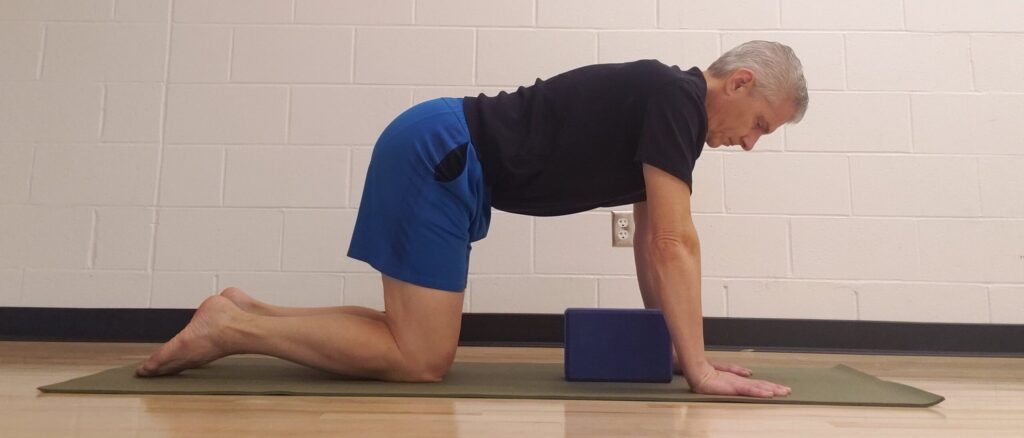

Combine the block positions
- Return to your hands and knees position.
- Position one block on its long side directly in front of your knees with the broad side facing forward. Center the second block just behind the heels of your hands. You’re combining the two block positions to serve as “brakes” so that you can’t drop too close to the floor or lose your plank alignment in Chaturanga.
- Step your feet back into Plank, keep your legs active and pull your navel up toward your spine so the abdominal muscles support the lower back.
- Initiate moving forward again from your toes, and immediately bend your elbows in place. Tuck your elbows into your ribs. As you move forward and the elbows bend, your thighs will contact one block, and your abdomen will contact your second block. Keep those abs engaged!
- If you feel like floating, lift your feet off the floor and extend your arms alongside your torso. You could even pretend to “swim” in the air!
- Bring your hands and feet back to the floor and press up to plank.
- Drop your knees to the floor, remove your blocks, and press back into Balasana (Child’s Pose) for a little rest.
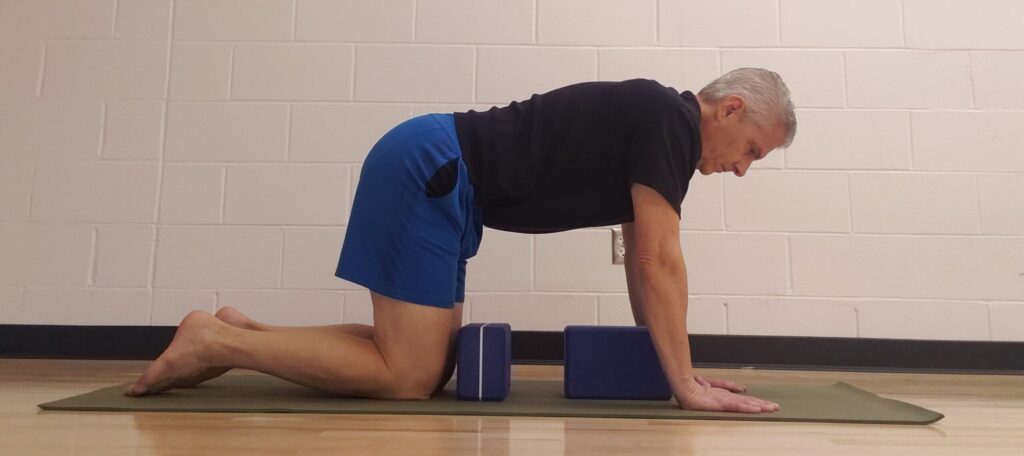
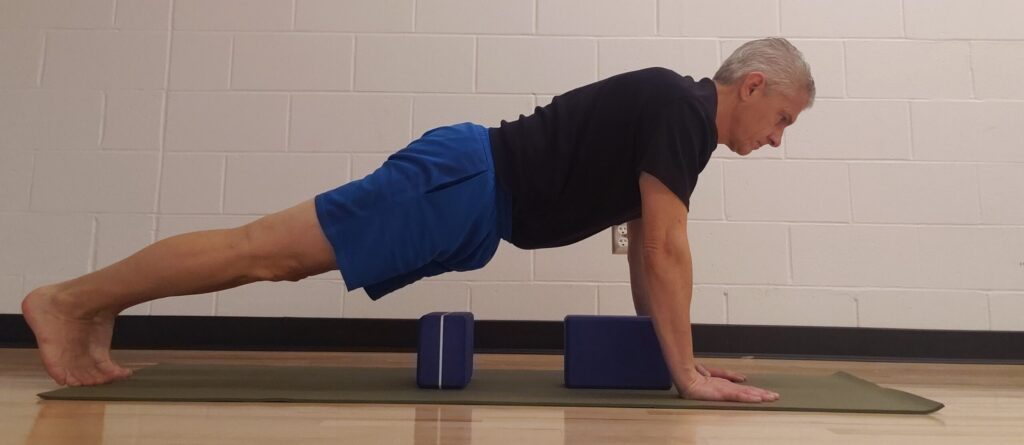



Let’s go all the way
Once you have rested to your satisfaction in Balasana, let’s remove the training wheels (so to speak) and do Chaturanga Dandasana au naturel.
- Return to your hands and knees position.
- Step your feet back into Plank, keeping your legs active and and your abdominal muscles engaged.
- Trying looking slightly forward (instead of straight down) as you initiate gliding forward while bending your elbows in place. Keep your elbows tucked into your ribs.
- Come down just to elbow height.
- Feel free to return to Plank if you can keep your heel-to-crown alignment. Or you can float up to Urdhva Mukha Svanasana (Upward-Facing Dog Pose) by rolling over your toes or flipping your feet over one at a time, pressing into your hands, and opening your chest forward.
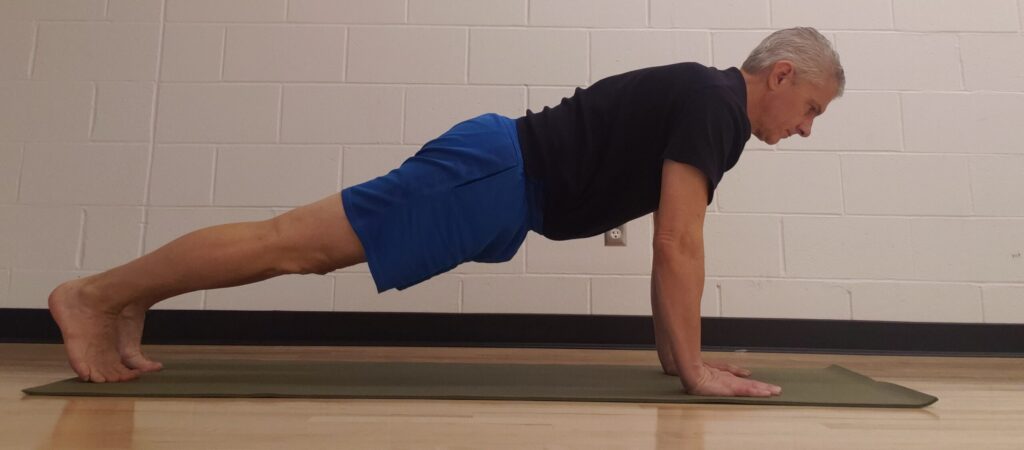

Be patient with yourself…and persevere
Chaturanga Dandasana may take some time to really get into your body, but don’t give up. Practice with blocks (and without), and keep coming back to it. Little by little, you can train your body to distribute weight and effort more evenly throughout. You’ll grow more confident, and your strength will improve to carry you into and out of Chaturanga with greater ease and less strain on your wrists, elbows, and shoulders.
Lindel Hart teaches yoga online for PerfectFit Wellness. He lives in Western Massachusetts and teaches at Deerfield Academy, a private residential high school, as well as at Community Yoga and Wellness in Greenfield, MA. Visit his website, Hart Yoga.





Good info!
Thank you!